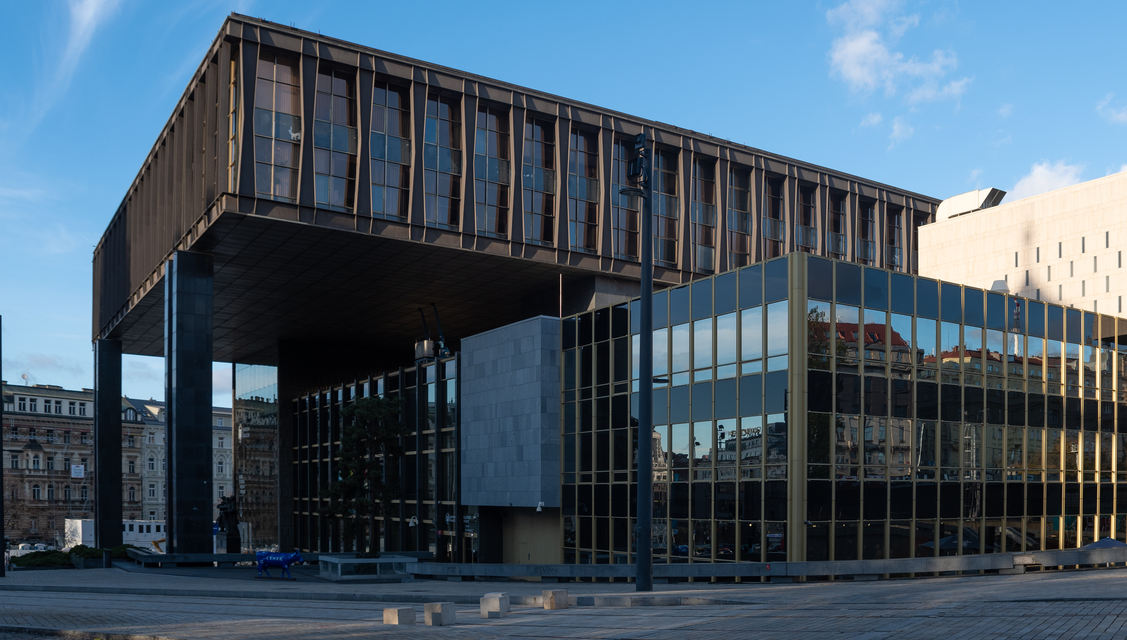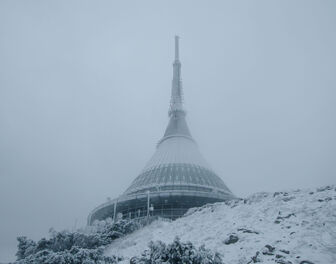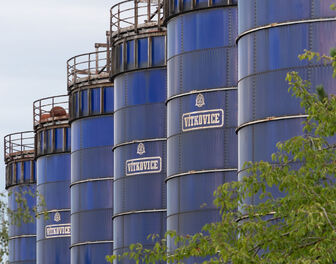An iconic silhouette that has become part of the city’s, region’s, and even a university’s emblem; a structure that locals inherently perceive as part of their identity; a national cultural heritage and a building nominated for entry on the UNESCO World Heritage List. All of this describes a single building that has crowned the summit of Ještěd Mountain above the northern Czech city of Liberec since 1973 – the Ještěd Hotel and Television Transmitter.
The Federal Assembly – that is my name. Welcome to Prague. Who am I? I have stood through all the crucial decisions our republic has faced since 1948, for once I served as the home of the National Assembly. From 1995, I became the headquarters of Radio Free Europe – and since 2009, as part of the National Museum, I have been safeguarding the treasures of our history.

I rise from solid foundations of my older self – the Stock Exchange building from 1937, where the National Assembly had been meeting since 1948. But at the turn of 1965 to 1966, it was decided that I will grow up taller. That was no easy matter: I had to fit perfectly into a busy location wedged between the National Museum, the Smetana Theatre, and a railway line, while also accommodating plans for a future arterial road and a metro line.
I grew out of the courage of engineers and architects. My spiritual fathers, architects Karel Prager, Jiří Albrecht and Jaroslav Kadeřábek, dared to imagine a house built upon another house, one that would leave my older self intact while allowing something new to flourish. And so, the idea of a suspended structure was born.
My construction was a true challenge – my new body was supposed to stand high above the ground, be unusually long and heavy, and the space around me was very limited. In addition, they wanted me to stand on a prominent spot, within sight of Wenceslas Square, a place where history itself often unfolds.
They built me from steel. They said only steel could give life to a structure this daring. Therefore, I was born in Ostrava, in the Vítkovice Ironworks – a factory full of blazing sparks, noise and swirling dust. All my 3 500 tons were then transported to Prague, where the building started. I was given a 59-by-83-metre steel welded frame made from Vierendeel girders – the kind once used only for bridges.
And so, I finally became the “house upon a house” – today’s new building of the National Museum – and I stand here to this day.
This text is based on the “Talking Buildings” concept (https://talkingbuildings.net/en), carried out as part of the SINCERE project – The second life of modern period architecture: Resilient and adaptive renovation towards net-zero carbon heritage buildings (https://sincere-project.eu/), funded by the European Union’s Horizon Europe programme
Read also:
Icons of the Czech Countryside: The Story of Vítkovice Silos
Anyone who has traveled through the Czech countryside knows them – tall dark blue cylinders rising high, displaying the iconic logo of the Vítkovice Ironworks, clearly announcing a place associated with agriculture. These are the enameled tower silos and tanks known as "Vítkovice" — symbols of agricultural industry of our countryside.
When Our Fire Went Out – What Would Become of Us?
We are Blast Furnaces No. 4 and 6. For decades, we stood here with our flames burning day and night. But in September 1998, our fire finally went out. And with it came a big question: what would happen to us and to the entire Vítkovice complex?







